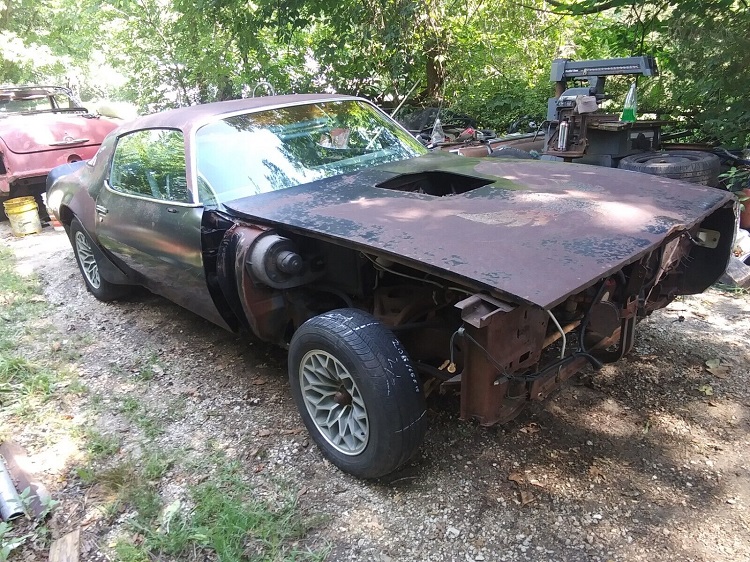I don’t know about you, but I believe an original Trans Am should only be stored in someone’s collection, away from anything that can ruin its condition, including rain and snow.

Unfortunately, this 1977 example had to face more than just rain and snow, as the car ended up in a horrible condition, likely after sitting under the clear sky for decades.
1977 witnessed the debut of a new front end on the Trans Am, so the car became even more compelling for those who wanted to get a Pontiac. The carmaker produced 68,744 units; the base version was the most popular choice, with over 53,000 cars. More people ordered the 400 L78 v8 engine, with 29,313 Trans Ams rolling off the assembly lines with this configuration under the hood.
If you want a truly rare 1977 Trans Am, you must get the Special Edition 403 L80 (look for the letter K in the VIN code), as Pontiac produced only 180. It’s unclear how many of them are still in existence today, but considering how some people treat these gems, I don’t expect too many.
Now it’s time for a horrible Trans Am whose condition is beyond imagination for diehard Pontiac fans.

The car has been sleeping outside for a long time, so issues like rust and rot are unsurprising. It’s also missing plenty of parts, especially inside, possibly as it served as a donor for another Trans Am. You’d think the engine under the hood (apparently still the 400 that came with the car when it rolled off the assembly lines) is good for powering a different project, but that won’t be the case. The engine is seized, and some parts might be missing too.
As a petrolhead, I can’t imagine how an otherwise gorgeous Trans Am can end up looking so bad, so at the moment, I don’t believe this gem has any other option than to wave goodbye to our world once and for all. The vehicle can only be used for parts, though if you look closely, you’ll have a hard time finding something usable on this Trans Am. The car has plenty of rust, so you should double-check every little piece of metal before planning to use it on another project.